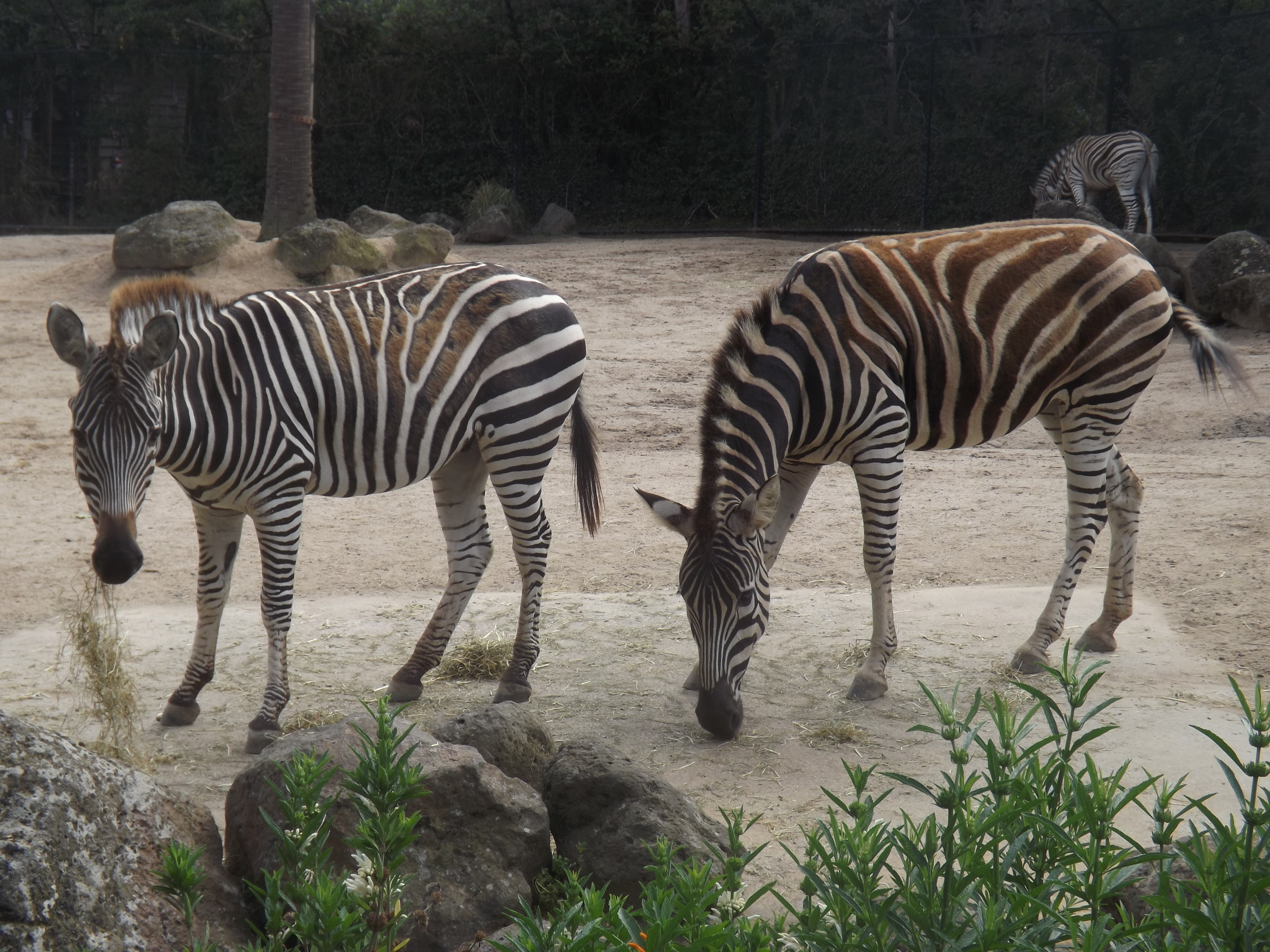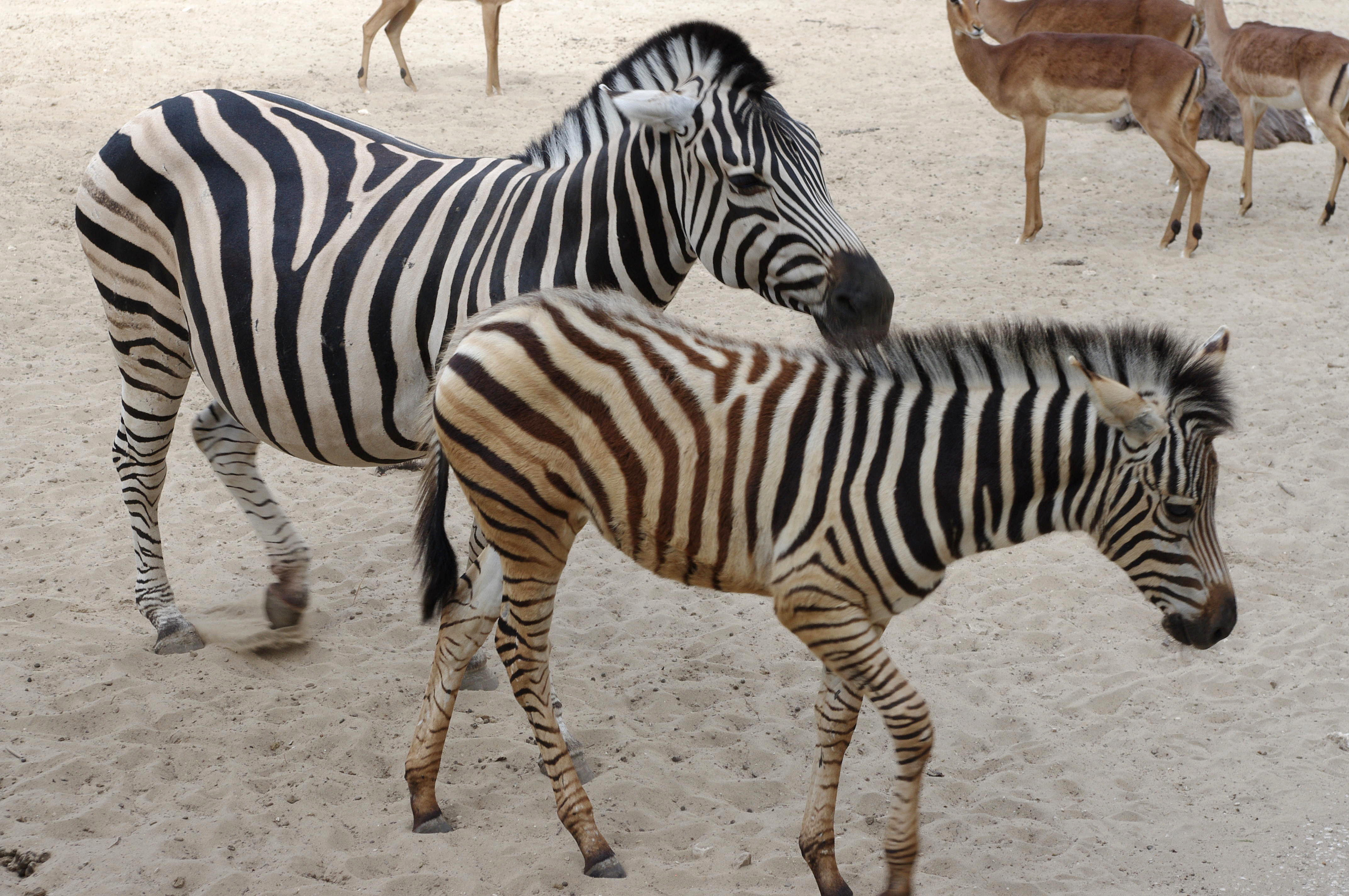Chapman's Zebra: Difference between revisions
mNo edit summary |
No edit summary |
||
| (22 intermediate revisions by 9 users not shown) | |||
| Line 1: | Line 1: | ||
{{FriendBox | {{FriendBox | ||
|name=Chapman's Zebra | |name=Chapman's Zebra | ||
|originalpic=Chapman's ZebraOriginal. | |originalpic=Chapman's ZebraOriginal.png | ||
|name_jp= | |name_jp=チャップマンシマウマ | ||
|name_rm=Chappuman shimauma | |name_rm=Chappuman shimauma | ||
|firstfeatured=Kemono Friends | |firstfeatured=Kemono Friends Festival | ||
|name_sci=Equus quagga chapmani | |name_sci=Equus quagga chapmani | ||
|distribution=South Africa | |distribution=South Africa | ||
| Line 12: | Line 12: | ||
}} | }} | ||
{{FriendBuilder | {{FriendBuilder | ||
|introduction='''Chapman | |introduction=The '''Chapman's Zebra''' is a type of [[Friend]] that appeared first in [[Kemono Friends Official Guidebooks #Volume 1|Guidebook Volume 1]]. | ||
|trivia= | |appearance=She has long striped white hair With a big ahoge that represents a zebra's hair. Her hair separates to the sides towards the end. She has a short light blue jacket with black stripes on the arms. She has Wide White short overalls with big pockets and black stripes. She has striped white leggings hat fades to no stripes towards the end. She wears bluish white shoes that are decorated with a small bow. | ||
|t0=No | |||
|t1=No | |||
|t2=No | |||
|t3=No | |||
|t4=No | |||
|t5=No | |||
|t6=No | |||
|t7=No | |||
|t8=No | |||
|t9=Yes | |||
|pavirole=Observable character | |||
|t10=No | |||
|t11=No | |||
|t12=No | |||
|t13=Yes | |||
|fesrole=Minor character in story, playable character | |||
|t14=No | |||
|t15=Yes | |||
|picrossrole=Appears on multiple puzzles | |||
|t16=No | |||
|t17=No | |||
|t18=No | |||
|t19=No | |||
|t20=No | |||
|t21=No | |||
|t22=Yes | |||
|kf3role=Minor character in story, playable character | |||
|t23=No | |||
|t24=No | |||
|t25=No | |||
|t26=No | |||
|t27=No | |||
|t28=No | |||
|minor==== [[Kemono Friends Picross]] === | |||
Chapman's Zebra appears in 2 different puzzles of Kemono Friends Picross where the player can obtain a picture of the friend by solving a puzzle. | |||
|reallife=[[File:Chapman's Zebras 01.jpg|thumb|upright=1.0|left|Chapman's zebras at the Melbourne Zoo. Photo by [https://commons.wikimedia.org/wiki/File:Chapman%27s_Zebras_01.jpg SuperJew], 2015.]] | |||
The Chapman's Zebra (''Equus quagga chapmani'') is a herbivorous mammal of the [https://en.wikipedia.org/wiki/Equidae Equidae] family and the genus [https://en.wikipedia.org/wiki/Equus_(genus) Equus], specifically the odd-toed ungulate order. It is a subspecies of the [[Plains Zebra]]. These Zebras are native to the savannahs of north-east South Africa, Zimbabwe, Botswana, the Caprivi Strip in Namibia, and southern Angola. | |||
Chapman's Zebras are distinguished by the subtle coloration differences in their stripes: lighter brown lines between the black and white stripes. Foals are born with the signature brown stripes and in some cases, they never turn to the classic black and are left with dark brown stripes. Each individual zebra has its own unique stripe pattern (including shadow stripes, which are light gray stripes usually on the legs). The Chapman's Zebra is also different from other zebra species in that the stripes continue past the knees. | |||
They are somewhat stocky animals, with males being around 270–360 kg (600–800 lb) and females weighing about 230–320 kg (500–700 lb). Both sexes stand at the same height of 120–130 cm (48–52 in) tall. Foals weigh 25-50 kg (55-88 lb) at birth. | |||
A large portion of the day is spent eating, around 50%. Low-quality grasses found in savannas, grasslands, and shrublands make up the majority of their diet, but they have been known to occasionally eat wild berries and other plants to assist in increasing protein intake. The zebras show a preference for shorter grasses, but will sometimes eat longer grasses that have grown in the wet season. Young foals rely on their mother's milk for the first year or so of their life for sustenance, as their teeth cannot break down the tough grass. | |||
[[File:Zebra Botswana edit.jpg|thumb|left|A harem of Chapman's Zebras. Photo by Paul Maritz ([https://en.wikipedia.org/wiki/User:Paulmaz Paulmaz]).]] | |||
The Chapman's Zebra is a very social animal. The herds can have tens of thousands of individuals. Larger herds usually have several permanent "families", harems consisting of one main stallion, one to six females, and their offspring. Due to their social nature they rarely exhibit aggressive behavior towards each other, or even other species. Males without a harem have been observed to form long term "cliques" with other male bachelors, which helps to improve their social skills. On the other hand, females stay in the same group their whole lives. Foals in the group are able to distinguish different groups by scent. | |||
Gestation of foals lasts around 12 months, after which a mare will bear a single foal. The foals are born ready to run, which is essential for survival so they are not left behind. | |||
While not considered an endangered species, their numbers are steadily decreasing. Human interference such as farming, hunting, poaching, and droughts brought on by climate change are the main causes. Human settlements also impact populations by interrupting migratory patterns, thus limiting food sources. Evidence suggests that wildlife corridors could possibly be used to re-establish migratory patterns by linking up ecosystems, and that the zebras would be able to adapt to these new migration paths with little issues or complications. | |||
Other conservation efforts have been made to help attempt to stabilize the population. The [https://en.wikipedia.org/wiki/Majete_Wildlife_Reserve Majete Wildlife Reserve] participated in a captive breeding and reintroduction program, however due to the lack of predators it is unsure if the zebras would have the proper survival abilities. The ability to safely replicate the threat of predators in captivity is a major issue. This impacts a number of aspects of their lives, such as when to eat, when to rest, and when to move. As yet no solution has been found. | |||
|trivia=[[File:La-Palmyre-zoo 121-Zebre-chapman.jpg|thumb|right|A mother Chapman's Zebra with her foal at the La Palmyre zoo, France. Photo by user [https://commons.wikimedia.org/wiki/User:Traumrune Traumarune].]] | |||
* Adult zebras can run at up to 56 kilometers per hour (35 miles per hour). | |||
* They are [https://en.wikipedia.org/wiki/Crepuscular_animal Crepuscular] animals, being more active at dusk. | |||
* The bonds created between mother and foal is so strong, it lasts well into the offspring's adulthood. | |||
* In 1984, a Chapman's Zebra was successfully born via equine surrogacy. | |||
* Chapman's zebras are extinct in Burundi and Lesotho, and possibly in Somalia. | |||
|reference=* [https://en.wikipedia.org/wiki/Chapman%27s_zebra Wikipedia Page] | |||
* Layward, E. L. (1865). Proceedings of the Zoological Society of London: London Academic Press. | |||
* [https://www.zoossa.com.au/wp-content/uploads/Chapmans-Zebra-08.pdf "Chapman's Zebra" (PDF)]. Monarto Zoo. 2008. | |||
* [https://www.nationalgeographic.com/animals/mammals/p/plains-zebra "Plains Zebra ; National Geographic"]. Animals. 2010-09-10. | |||
* [https://animals.sandiegozoo.org/animals/zebra "Zebra ; San Diego Zoo Animals & Plants"]. animals.sandiegozoo.org. Retrieved 2020-05-27. | |||
* de Vos, Charli; Leslie, Alison J.; Ransom, Jason I. (2020). "Plains zebra (Equus quagga) behaviour in a restored population reveals seasonal resource limitations". Applied Animal Behaviour Science. 224: 104936. doi:10.1016/j.applanim.2020.104936. ISSN 0168-1591. S2CID 213360110. | |||
* Fischhoff, Ilya R.; Sundaresan, Siva R.; Larkin, Heather M.; Sellier, Marie-Jeanne; Cordingley, Justine E.; Rubenstein, Daniel I. (2009-10-10). "A rare fight in female plains zebra". Journal of Ethology. 28 (1): 201–205. doi:10.1007/s10164-009-0183-7. ISSN 0289-0771. S2CID 14602715. | |||
* Pluháček, Jan; Bartoš, Luděk; Bartošová, Jitka; Kotrba, Radim (2010). "Feeding behaviour affects nursing behaviour in captive plains zebra (Equus burchellii)". Applied Animal Behaviour Science. 128 (1–4): 97–102. doi:10.1016/j.applanim.2010.09.003. ISSN 0168-1591. | |||
* "Science Update; Horse Gives Birth to Zebra". Boston Globe. 1984. | |||
}} | }} | ||
[[Category: | {{MammalFriendsNav}} | ||
[[Category:Real Animal Friends]] [[Category:Mammal Friends]] [[Category:Equid Friends]] [[Category:Zebra Friends]] [[Category:Guidebook Debuts]] | |||
Latest revision as of 16:52, 12 February 2024
Chapman's Zebra
| |||
|---|---|---|---|
| チャップマンシマウマ | |||
| Character Data | |||
| Romaji | Chappuman shimauma
| ||
| Debut | Kemono Friends Festival | ||
| Animal Data | |||
| Scientific Name | Equus quagga chapmani
| ||
| Distribution | South Africa
| ||
| Diet | Herbivore
| ||
| Avg. Lifespan | ?
| ||
| Read More | Chapman's zebra
| ||
| Conservation |  Data Deficient | ||
| Chapman's Zebra | Festival (Costume) | Pavilion | KF3 (V2) | Gallery |
The Chapman's Zebra is a type of Friend that appeared first in Guidebook Volume 1.
Appearance
She has long striped white hair With a big ahoge that represents a zebra's hair. Her hair separates to the sides towards the end. She has a short light blue jacket with black stripes on the arms. She has Wide White short overalls with big pockets and black stripes. She has striped white leggings hat fades to no stripes towards the end. She wears bluish white shoes that are decorated with a small bow.
Series Appearances
| Media | Role | |
|---|---|---|
| 2018 | Kemono Friends Pavilion | ↪ Observable character |
| 2018 | Kemono Friends Festival | ↪ Minor character in story, playable character |
| 2018 | Kemono Friends Picross | Appears on multiple puzzles |
| 2019 | Kemono Friends 3 | ↪ Minor character in story, playable character |
Minor Appearances
Kemono Friends Picross
Chapman's Zebra appears in 2 different puzzles of Kemono Friends Picross where the player can obtain a picture of the friend by solving a puzzle.
In Real Life

The Chapman's Zebra (Equus quagga chapmani) is a herbivorous mammal of the Equidae family and the genus Equus, specifically the odd-toed ungulate order. It is a subspecies of the Plains Zebra. These Zebras are native to the savannahs of north-east South Africa, Zimbabwe, Botswana, the Caprivi Strip in Namibia, and southern Angola.
Chapman's Zebras are distinguished by the subtle coloration differences in their stripes: lighter brown lines between the black and white stripes. Foals are born with the signature brown stripes and in some cases, they never turn to the classic black and are left with dark brown stripes. Each individual zebra has its own unique stripe pattern (including shadow stripes, which are light gray stripes usually on the legs). The Chapman's Zebra is also different from other zebra species in that the stripes continue past the knees.
They are somewhat stocky animals, with males being around 270–360 kg (600–800 lb) and females weighing about 230–320 kg (500–700 lb). Both sexes stand at the same height of 120–130 cm (48–52 in) tall. Foals weigh 25-50 kg (55-88 lb) at birth.
A large portion of the day is spent eating, around 50%. Low-quality grasses found in savannas, grasslands, and shrublands make up the majority of their diet, but they have been known to occasionally eat wild berries and other plants to assist in increasing protein intake. The zebras show a preference for shorter grasses, but will sometimes eat longer grasses that have grown in the wet season. Young foals rely on their mother's milk for the first year or so of their life for sustenance, as their teeth cannot break down the tough grass.

The Chapman's Zebra is a very social animal. The herds can have tens of thousands of individuals. Larger herds usually have several permanent "families", harems consisting of one main stallion, one to six females, and their offspring. Due to their social nature they rarely exhibit aggressive behavior towards each other, or even other species. Males without a harem have been observed to form long term "cliques" with other male bachelors, which helps to improve their social skills. On the other hand, females stay in the same group their whole lives. Foals in the group are able to distinguish different groups by scent.
Gestation of foals lasts around 12 months, after which a mare will bear a single foal. The foals are born ready to run, which is essential for survival so they are not left behind.
While not considered an endangered species, their numbers are steadily decreasing. Human interference such as farming, hunting, poaching, and droughts brought on by climate change are the main causes. Human settlements also impact populations by interrupting migratory patterns, thus limiting food sources. Evidence suggests that wildlife corridors could possibly be used to re-establish migratory patterns by linking up ecosystems, and that the zebras would be able to adapt to these new migration paths with little issues or complications.
Other conservation efforts have been made to help attempt to stabilize the population. The Majete Wildlife Reserve participated in a captive breeding and reintroduction program, however due to the lack of predators it is unsure if the zebras would have the proper survival abilities. The ability to safely replicate the threat of predators in captivity is a major issue. This impacts a number of aspects of their lives, such as when to eat, when to rest, and when to move. As yet no solution has been found.
Trivia

- Adult zebras can run at up to 56 kilometers per hour (35 miles per hour).
- They are Crepuscular animals, being more active at dusk.
- The bonds created between mother and foal is so strong, it lasts well into the offspring's adulthood.
- In 1984, a Chapman's Zebra was successfully born via equine surrogacy.
- Chapman's zebras are extinct in Burundi and Lesotho, and possibly in Somalia.
References
- Wikipedia Page
- Layward, E. L. (1865). Proceedings of the Zoological Society of London: London Academic Press.
- "Chapman's Zebra" (PDF). Monarto Zoo. 2008.
- "Plains Zebra ; National Geographic". Animals. 2010-09-10.
- "Zebra ; San Diego Zoo Animals & Plants". animals.sandiegozoo.org. Retrieved 2020-05-27.
- de Vos, Charli; Leslie, Alison J.; Ransom, Jason I. (2020). "Plains zebra (Equus quagga) behaviour in a restored population reveals seasonal resource limitations". Applied Animal Behaviour Science. 224: 104936. doi:10.1016/j.applanim.2020.104936. ISSN 0168-1591. S2CID 213360110.
- Fischhoff, Ilya R.; Sundaresan, Siva R.; Larkin, Heather M.; Sellier, Marie-Jeanne; Cordingley, Justine E.; Rubenstein, Daniel I. (2009-10-10). "A rare fight in female plains zebra". Journal of Ethology. 28 (1): 201–205. doi:10.1007/s10164-009-0183-7. ISSN 0289-0771. S2CID 14602715.
- Pluháček, Jan; Bartoš, Luděk; Bartošová, Jitka; Kotrba, Radim (2010). "Feeding behaviour affects nursing behaviour in captive plains zebra (Equus burchellii)". Applied Animal Behaviour Science. 128 (1–4): 97–102. doi:10.1016/j.applanim.2010.09.003. ISSN 0168-1591.
- "Science Update; Horse Gives Birth to Zebra". Boston Globe. 1984.
